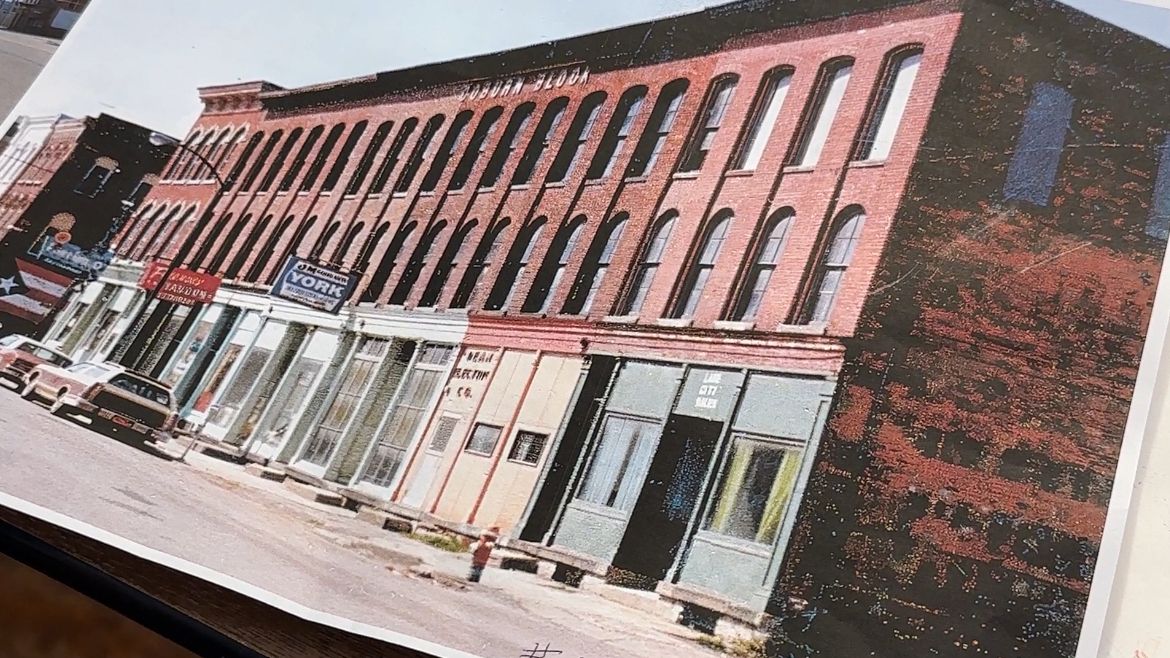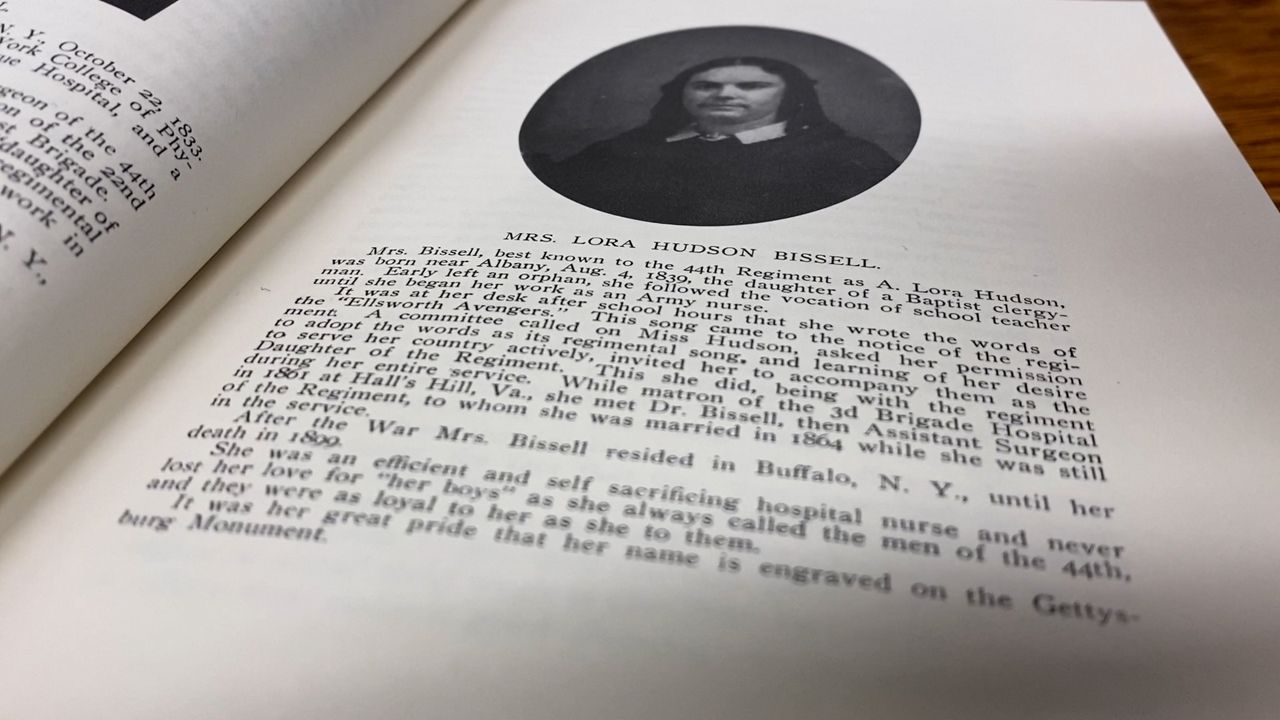BUFFALO, N.Y. — A steamboat sitting in the water next to Buffalo's silo city holds a forgotten history.
It’s a story of civil rights, the courage of a young woman, and the fight for racial justice.
This old steamboat is called the S.S. Columbia. It’s succumbing to the years of wear and tear living on the great lakes.
Before making its way to Buffalo’s waters, it was docked in Detroit. And that’s where this story begins.
This boat is one of the oldest remaining of its kind and it used to be a bustling ferry to Boblo Island in Canada.
“Boblo was a really, really popular destination. It was an island amusement park that was technically located in Canada, but was owned by an American company. We might think of Coney Island, Boblo is like our Coney Island,” Malika Pryor, Detroit Historical Society senior director of education and programs, said.
Buffalo had something similar called the Canadiana that took people to Crystal Beach.
“In Midwest amusement parks, many of them were gotten to by steamboats as opposed to by subways or trolley cars as you would see on the east coast,” Dr. Victoria Wolcott, University at Buffalo professor said. “There has been a lot of nostalgia about these old amusement parks, including Crystal Beach. And often, that nostalgia can gloss over, or hide, the fuller history of how these facilities were used and the racial segregation within them.”
And to tell that story more fully is exactly what documentarian Aaron Schillinger and Detroit-based journalist Desiree Cooper are doing.
“To have this historic ship that has meaning in of itself be in our midst, when it was also a part of the birth of the civil rights movement, now that’s the whole story,” said Cooper.
They collaborated on this four and a half minute stop-animation short film, telling the story of Sarah Elizabeth Ray. They set the scene in 1945, when ray was only 24-years-old, and she had just graduated secretarial school. She and her classmates decided to celebrate and they boarded the Columbia to head to Boblo Island. But, Ray was kicked off because she was Black. And her classmates didn’t defend her. As the story goes, she was refunded her money for the admission to the boat, but she threw the change into the water.
In 2006, Cooper was a columnist with the Detroit Free Press. She interviewed Ray, who went by Lizz Haskell later in life.
“I could still feel her anger,” Cooper said. “She was 86 at that time and it seemed she had never forgotten the humiliation from that moment.”
After the incident, Ray went to the NAACP for help. Her lawyer? Thurgood Marshall, before he was a Supreme Court Justice.
In Michigan, there was the Michigan Civil Rights Act on the books that prevented this exact kind of discrimination.
“The laws in Michigan and New York and other states, there were civil rights laws on the book, but largely not enforced,” said Dr. Wolcott.
Ray’s case ended up going to the Supreme Court. On February 2, 1948, the court decided in Ray’s favor. She won.
Cooper says Ray’s case paved the way for other civil rights cases, too.
“They were putting their toe in the water to see if the Supreme Court had an appetite for really striking down de jure or legal segregation in the United States, because if they couldn’t do it in that case, they were not going to do it for any other cases,” Cooper said. “Ultimately, her case led to the Brown v. Board of Education, so it means a lot.”
She added it set a precedent in another kind of law too.
“Lots of time when we think about the civil rights movement, we think about the ground, the land” Cooper said. “And there is a whole maritime history of civil rights.”
Because of this case, many refer to Ray as Detroit’s Other Rosa Parks.
“In Sarah’s instance, she’s in her early 20’s, she’s celebrating life. She may have attained the highest education perhaps maybe in her family and she is there to do whatever everyone else is there to do,” said Pryor. “It isn’t a strategic decision. It isn’t something that is being contemplated. She’s just living her life, but in that moment she has to make a decision around ok, am I going to accept this and go quietly? What an amazingly brave thing to do is to decide, no I am not going to go quietly,” said Pryor.
“So Sarah E. Ray is so significant to Detroit, even though Detroiters don’t know her story, particularly for Black and Brown Detroiters,” said Pryor. “She makes it possible for generations like myself to be able to have this true Americana experience where the frame of what amusement and recreation looks like is brought into include the entirety of our population.”
Schillinger came across Ray’s story when he was doing a separate story on the Boblo boats themselves.
“I found this story in a book called "Summer Dreams on Boblo Island" and it was a page and a half about this civil rights activist called Sarah Elizabeth Ray, and I Googled her and first nothing was coming up and I was like how do people not know about this? It seemed like such a powerful, important chapter.”
But it wasn’t easy researching someone who seemed forgotten by history.
“We have a dedicated researcher who has volunteered so much of her time, pouring through the Internet, digging in archives which has been made more difficult because of the pandemic,” Schillinger said.
The film was released last summer and both Cooper and Schillinger hope it resonates with people on the Great Lakes.
“People are hungry for these stories that shed light on past injustices and I am excited to bring this to Buffalo as well because they have this legendary steamboat sitting on the river front and she has such an important history,” said Schillinger.
“I think at some cosmic level, Columbia wants people of the Great Lakes to know her significance,” said Cooper. “Not only as a steamship and one of the oldest remaining, but also its role in the birth of civil rights. That’s not a story that belongs in one city.
To watch the full documentary by Aaron Schillinger with Desiree Cooper, click here.
Together, they secured a fiscal sponsorship and hope to produce a 30 minute piece in the next 2-3 years. To contribute, go here.
Next week, Spectrum News will tell you more about the group aiming to restore the Columbia. To learn more about this project, go here.










